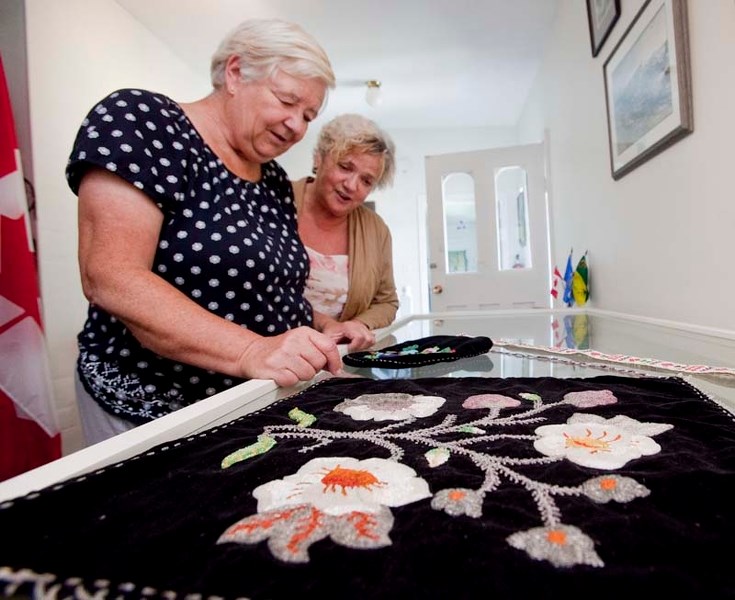Genealogy Roadshow, a new series that began running on PBS in September, might have people thinking that tracing family roots is just a switch of a remote control away.
In its first one-hour program the genealogist hosts, who had help from researchers from the Church of Jesus Christ of Latter Day Saints, managed to trace the histories of a handful of people. It's likely that the guests, who were armed with family photos and touching stories, had been pre-screened so that the research was done beforehand. With the click of a mouse the program hosts showed their guests computer screens that depicted births, deaths, marriage and census records to prove whether they were in fact related to such famous Americans as Daniel Boone, Jesse James and Abraham Lincoln.
"Shows like this or even the Internet's Ancestry.com should come complete with harp music and a little mist. For the most part it doesn't happen like that," said John Althouse, a member of the Alberta Genealogical Society.
Sharon Morin, of the Michif Cultural and Resource Centre agreed as she explained that she and her mother, former senator Thelma Chalifoux, had a cousin research their family tree for them.
The cousin, a member of the Church of Jesus Christ of Latter Day Saints, spent four years tracing the family history. She was able to trace their French lineage back to 866 A.D. She traced the aboriginal history back to 1797, to a woman named Techomehgood.
"It's unusual to find a (woman's) name like that and also to be able to trace an actual First Nations family member that far back," said Morin, adding that in some instances genealogists can locate records of births, deaths, marriage and baptismal certificates for First Nations peoples, but not always.
"Métis genealogy is not the same as it is for people of European ancestry. There were records here kept by the Hudson's Bay Company and by the priests, but for example, the Hudson's Bay Company did not acknowledge the women, called 'country wives,' so there were no records of their marriages," she said.
For those whose ancestry is mixed French/Aboriginal, it is sometimes easier to find marriage records, because employees of the North West Company were more open about their marital affairs, Morin said.
Sometimes in the past, because of discrimination, people hid their First Nations' roots and that complicates the search too.
"They tried to protect their family by keeping their roots hidden to protect them against discrimination," Morin said.
Still, as Morin's own family tree proves, it's not impossible to trace family histories, even Métis ones. The Michif Cultural and Resource Institute compiled a booklet that helps people get started.
Among the resources listed in the booklet are the Alberta Genealogical Society located in Room 162, 14315-118 Ave. in Edmonton and the Musée Heritage Museum, located at 5 St. Anne Street in St. Albert.
The genealogical society houses records compiled by the late Charles Denney, who catalogued and recorded the names of 1,200 Western Canadian Métis families. The Musée Heritage Museum has a database created by the late Elizabeth Macpherson, which has 70,000 names in a single family tree built from the Callihoo family line.
Proof of scrip
Evidence of Métis descent may be found by searching to see if family members applied for scrip in the late 1800s and early 1900s. Scrip was a quarter section of land given by the government to Métis families who applied for it. Those records may be found on microfilm at the Provincial Archives of Alberta.
"That's the only proof of Métis heritage. Scrip was given to the male head of the family. There were birth and baptismal certificates, but they didn't always say the ethnicity of the person. Scrip is the only government document that proves that," Morin said.
No matter what your family roots may be, all genealogical research begins in the present, Althouse said.
"Start with today and work back using as much family history as you know. And a good starting point is to start with yourself, then your parents then your grandparents and so on," he said.
The Denney research papers show a methodical approach that involved cutting out newspaper clippings about family anniversaries, birth and death announcements. Often he worked backwards from those tiny snippets of information, until he could find the connections to establish a family tree.
"Sometimes those records aren't complete. For example, how many of us have newspaper clippings in the basement, where someone cut off the date. If you are doing research it doesn't help much to find a clipping that says, 'Buried last Tuesday.' We all should keep better records," Althouse said.
Althouse, who has spent years researching his own family records back to Russia, stressed the importance of family stories. Unlike the PBS Genealogy Roadshow participants, Althouse did not find famous relatives in his family tree but his research has connected him with cousins, aunts and uncles, who told him stories he didn't know.
"Getting it down is the thing. In my case, I wanted to know why they left Russia. I still don't know, but the story is important. If the story isn't there, you can't easily research," he said, adding that to his surprise he learned a great deal about himself because of it.
"There are good things and some things not so good in the history. Sometimes the family stories that are passed down orally aren't the truth, because families tend to glorify everything, so in finding the truth, you lose something. But looking at your ancestors, you start to understand yourself a little better. It's funny, but often the same patterns repeat over and over," Althouse said.




